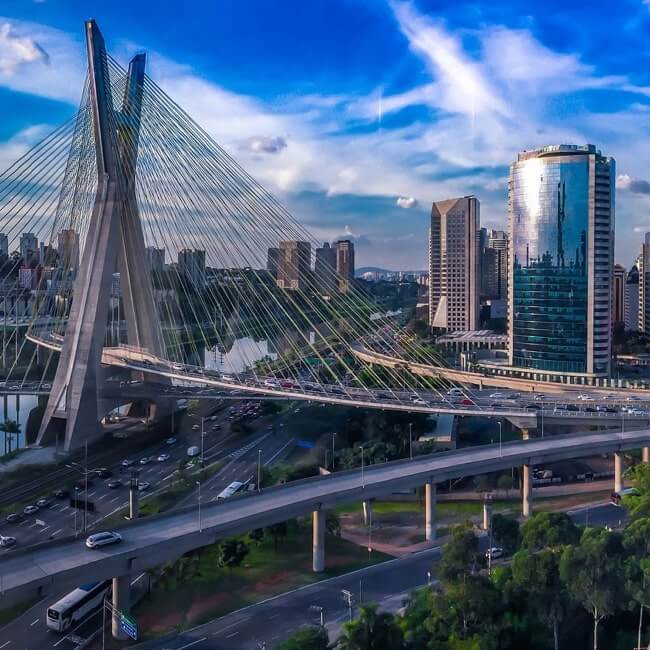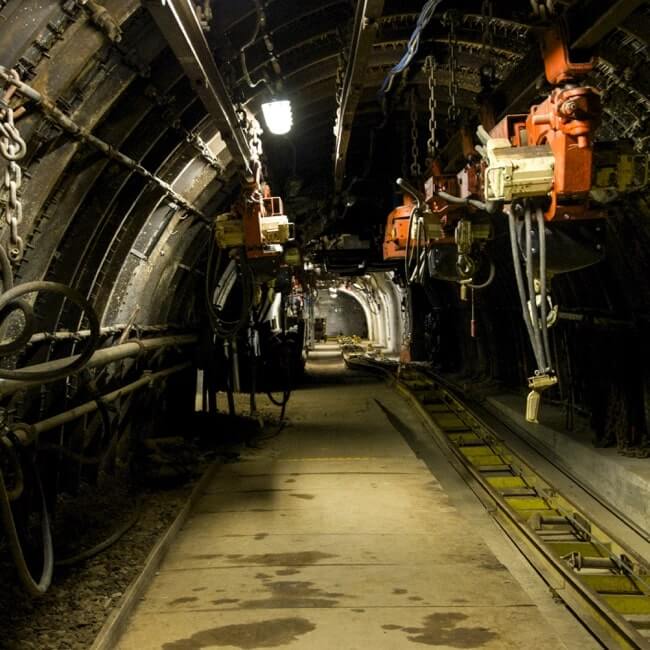How can Costa Rica overcome its transport infrastructure paralysis?

Costa Rica’s infrastructure sector is paralyzed, with road and transportation projects canceled or delayed.
Only three public-private partnership projects have been signed since the country approved its PPP law in 1998.
In an email conversation, independent infrastructure consultant Gustavo Ortiz, an expert in project development and financing, discusses the reforms needed to bring the sector back to life.
BNamericas: Which infrastructure subsectors require urgent attention in Costa Rica?
Ortiz: Without a doubt it is the transportation and highway sector. It's in the group of countries with the worst road infrastructure. According to the World Economic Forum, we are 117th of 141 countries evaluated, and with the slowest roads: 144th of 162 countries.
The lack of an efficient public transportation system means a significant portion of the population must rely on private vehicles as the only efficient transportation option, which generates a serious congestion problem.
This is impossible to address with more roads because it’s not a long-term solution to the problem, there isn’t the necessary space and it’s economically unfeasible. To prevent traffic chaos from paralyzing the large metropolitan area [of capital San José] in a few years, it’s essential to place mass public transportation (trains and buses) as a central pillar and priority for urban mobility.
BNamericas: What are the current challenges in project development?
Ortiz: There are several, but the main ones are the disastrous effect that the political cycle has during the planning and execution of infrastructure projects, which exceed the four years of an administration; the lack of long-term planning; and the lack of transparency and accountability.
For example, in the last 20 years the country has had 14 transport ministers. This means that a minister lasts on average 1.42 years. The projects that are carried out take between eight and 11 years, so they average between six and eight ministers. The national roads council (Conavi) in the last 12 years has had 11 directors and the national concessions council (CNC) in the last seven years has had eight technical secretaries.
Every time an administration or a minister changes, progress made on a project is not continued or there is an attempt to change what has already been done. This means that you have to start from scratch or change the concept of the project, delaying it, becoming a vicious circle. The 13 versions of the electric passenger train that have existed are the best proof of this.
BNamericas: How could projects be shielded so they survive political cycles?
Ortiz: Creating an efficient infrastructure planning and management system, and eliminating bad political practices, such as the desire for political credit, starting without having the rights of way, not providing continuity to projects, not basing decisions on technical criteria or a long-term vision, and low transparency and accountability, among others. Until we eliminate those, we won’t be able to have quality infrastructure.
The secrecy that has prevailed in Costa Rica in recent decades has only served to hide improvisation, negligence and corruption.
BNamericas: You mentioned improvisation, negligence and corruption. Do you think these are the prevailing elements in the system today?
Ortiz: Totally.
BNamericas: What are the most delayed projects that need to be built as soon as possible?
Ortiz: There are several, but we can mention three projects the country has been waiting for for decades.
The new 45km highway [from San José] to San Carlos began to be built in 2005. Although it may seem unlikely, it has been under construction for 19 years. If 2.4km had been built per year it would already be finished.
To date, 15 administrations and 25 transportation ministers have been in charge of the works. The public works and transportation ministry [MOPT] estimates that it will be completed in 2026 and, if this is true, construction will have taken 21 years and planning 57 years.
The expansion of the San José-San Ramón highway has not been carried out in 28 years. This project has gone through eight administrations and 17 transportation ministers. Without adequate justification, the investment cost went from US$266mn (in 2005) to US$650mn (in 2013) and tolls tripled.
Four companies have tried to carry out the project through a concession. There have been million-dollar cost overruns; arrears; addendums to the concession contract; protests by communities surrounding the project; early termination of the concession contract requested by the State and compensation to the concessionaire; and even the attempt to carry out the project through a trust, which also failed, this being the fifth failed attempt to develop it.
The electric passenger train for the greater metropolitan area has been in planning for 39 years. To date there have been 13 different versions of the project. It has changed several times in the type of train to be developed [surface level or elevated], the layout, whether it will be single or double track and whether the project will be developed in one or several stages, among other aspects. It has gone through 11 administrations and 21 transportation ministers.
BNamericas: Do you think PPPs have been used enough?
Ortiz: No, and this is precisely one of the causes of the great infrastructure gap in Costa Rica.
Chile has implemented 110 concession contracts and Colombia 129 contracts in the last 30 years, while Costa Rica in 26 years of existence of its concession law has only signed three contracts: the concession of route 27, Liberia airport and the Moín port container concession.
Again, the problem is in management. We have not understood that it’s impossible for the country, given its high level of fiscal deficit, to be able to finance with public resources the large infrastructure projects that the country needs. Only with the participation of the private sector, the country will be able to reduce its large infrastructure gap, but for this we must restructure the PPP program.
BNamericas: What should this restructuring be like?
Ortiz: Among the main changes necessary is separating the functions of the minister of transportation from those of the directors of Conavi and the CNC, making them no longer de facto subordinates of the minister.
The transport minister has a political role and should be mainly dedicated to being the representative of the government on the board of directors, ensuring the good performance of the institution, proposing projects to be evaluated for inclusion in the portfolio of priority projects, developing sectoral policies, ensuring that the new entity has the technical, human and financial resources necessary for its correct management, defending the budget within the government for the maintenance of assets and the development of new projects, coordinating the relationship between different entities.
The director of Conavi should have a technical role, focusing mainly on: long-term planning of infrastructure needs (20 to 50 years), managing long-term maintenance plans, developing new road infrastructure projects, managing the portfolio of new projects, developing a cycle of projects with mandatory monitoring, creating a permanent and competent organization, being accountable, creating a public database of infrastructure investments, and implementing a policy of total transparency and the fight against corruption.
To prevent the political cycle and bad political practices from affecting the planning and execution of projects, the private sector and citizens must participate on its board of directors. It is vital that the board of directors is made up of the same number of members from the public sector (for example minister of transportation and minister of planning) as from the private sector and citizens (for example two members appointed by the engineers and architects college CFIA, and the union of chambers and associations of the private business sector); and that decisions are made by simple majority without a tie-breaking vote to ensure that the director of Conavi is not at the mercy of the government in power, but rather responds to the board of directors as an independent and objective collegiate body, which is not affected by political ups and downs.
The directors of Conavi and the CNC must be appointed through a public contest in such a way that objectivity is guaranteed in their election and that the best candidate is chosen, putting an end to the “handpicked elections” that we have historically had. The knowledge needed to plan and execute large infrastructure projects is highly specialized and requires training staff and retaining them over time, for which well-paid personnel are required.
The study for the necessary restructuring of Conavi and the CNC must be carried out by a development bank with a group of consultants, who are in charge of designing the new entities, following the changes identified as necessary, with supervision of a committee made up of representatives from the public and private sectors.
Subscribe to the leading business intelligence platform in Latin America with different tools for Providers, Contractors, Operators, Government, Legal, Financial and Insurance industries.
News in: Political Risk & Macro (Costa Rica)

Are arbitration claims by LatAm-focused miners mounting?
Mining companies are pursuing 15 arbitration claims against Latin American nations amid warnings of growing political risk.

How COVID-19, politics have impacted Latin America’s private pension fund industry
BNamericas speaks to Manuel Tabilo, research manager at the International Federation of Pension Funds Administrators, about the pandemic, pension w...
Subscribe to Latin America’s most trusted business intelligence platform.
Other projects
Get key information on thousands of projects in Latin America, from current stage, to capex, related companies, key contacts and more.
- Project: Double Track Rio Seco - Desaguadero: Section V (Wilacollo - Desaguadero)
- Current stage:

- Updated:
1 day ago
- Project: Block ES-T-354
- Current stage:

- Updated:
1 day ago
- Project: Block ES-T-373
- Current stage:

- Updated:
1 day ago
- Project: Block ES-T-477
- Current stage:

- Updated:
1 day ago
- Project: Kayab field
- Current stage:

- Updated:
1 day ago
- Project: Las Lajas solar park
- Current stage:

- Updated:
2 days ago
- Project: Don Nicolas Heap Leach Project (Las Calandrias-Martinetas)
- Current stage:

- Updated:
11 hours ago
- Project: Vientos de Negritos II wind farm
- Current stage:

- Updated:
2 days ago
- Project: Specialized Container Terminal (TEC) - Port of Coatzacoalcos
- Current stage:

- Updated:
1 day ago
- Project: Repowering of Lake Musters - Comodoro Rivadavia aqueduct
- Current stage:

- Updated:
18 hours ago
Other companies
Get key information on thousands of companies in Latin America, from projects, to contacts, shareholders, related news and more.
- Company: Alch Agregados y Pavimentos, S.A. de C.V. - Alch Construcción, S.A. de C.V. - Triturados de Valles, S.A. de C.V. - Sánchez Valdez Construcciones, S... (Alch Agregados y Pavimentos - Alch Construcción - Triturados de Valles - Sánchez Valdez Construcciones - Constructora Maíz Mier - Infraestructura del Golfo)
-
Alch Agregados y Pavimentos, S.A. de C.V. - Alch Construcción, S.A. de C.V. - Triturados de Valles, S.A. de C.V. - Sánchez Valdez Construcciones, S.A. de C.V. - Constructora Maí...
- Company: Challenger Energy Group PLC (Challenger Energy)
-
Challenger Energy, formerly Bahamas Petroleum, is an oil and gas company engaged in exploration, appraisal, development and production with a focus on assets in the Caribbean an...
- Company: Elecnor S.A. (Elecnor)
-
Elecnor S.A. is a Spanish energy group that provides engineering, construction, operation, maintenance and development services in sectors such as railways, natural gas, telecom...
- Company: MPB Engenharia - ENECON
- Company: Integrated Service Construction E.I.R.L. (Inseco)
-
Inseco is a Peruvian engineering firm involved in the Latin American oil & gas sector. Inseco is involved in project management and EPC services for projects in the Peruvian mar...
- Company: Consorcio CCR Platforming Cangrejera, S.A. de C.V. (Consorcio CCR Platforming Cangrejera)
-
Consorcio CCR Platforming Cangrejera S.A. de C.V., formed by Construction and Services Activities S.A., Sener Ingeniería y Sistemas S.A. and Dragados Proyectos Industriales de M...
- Company: Agrupación Sabanitas Panamá




